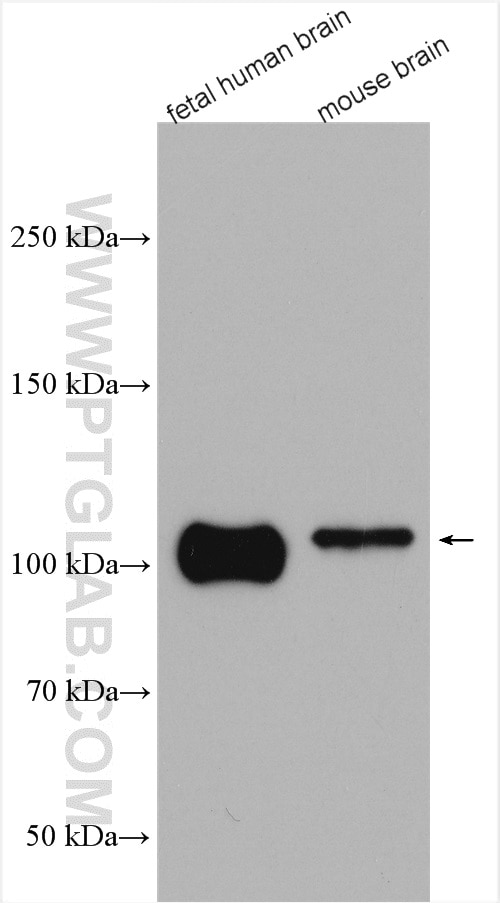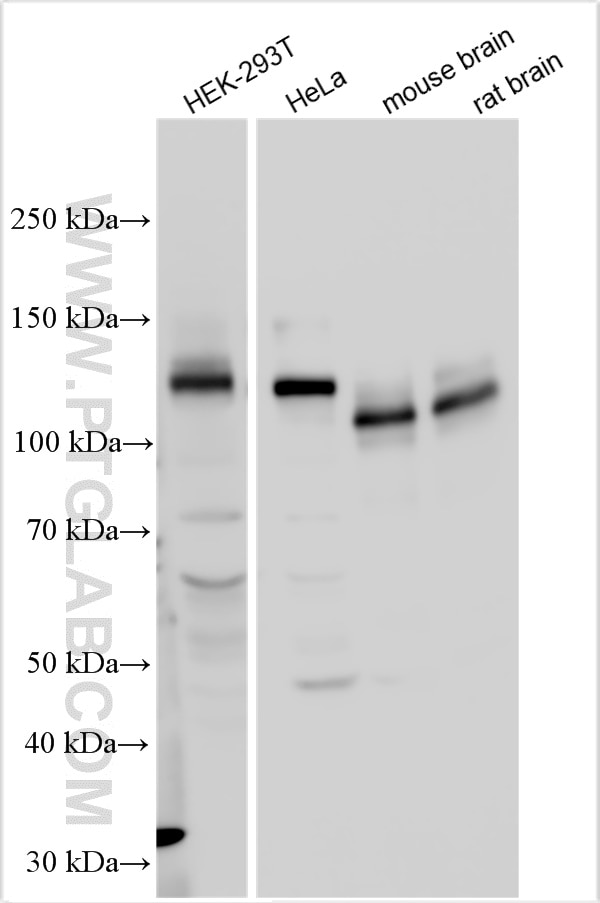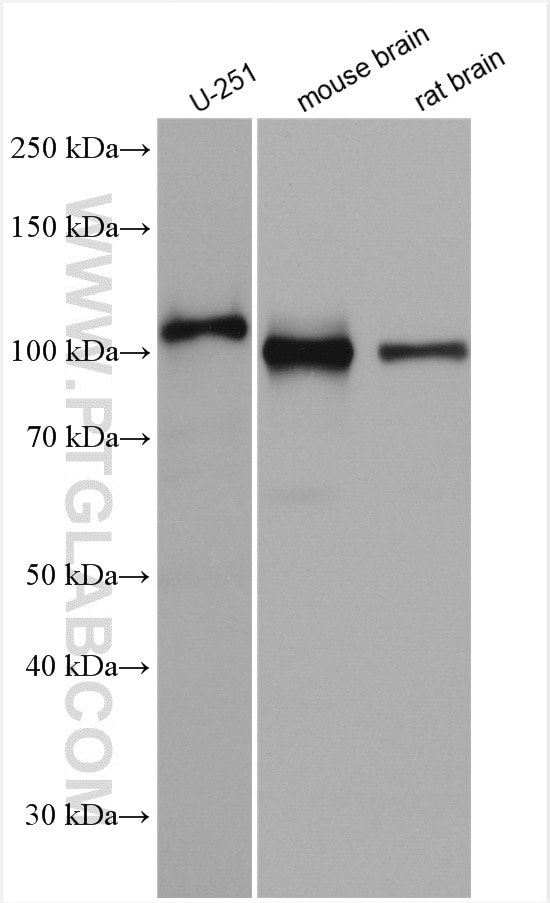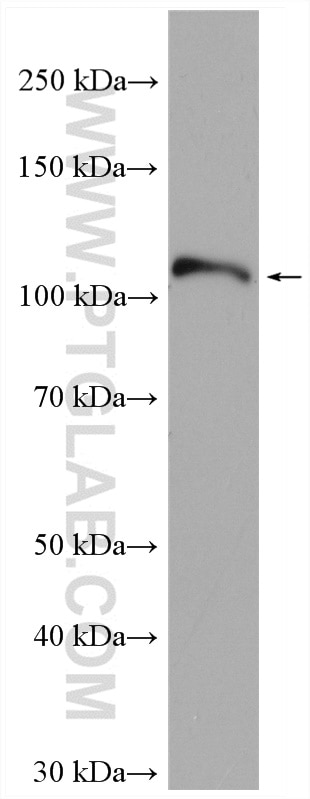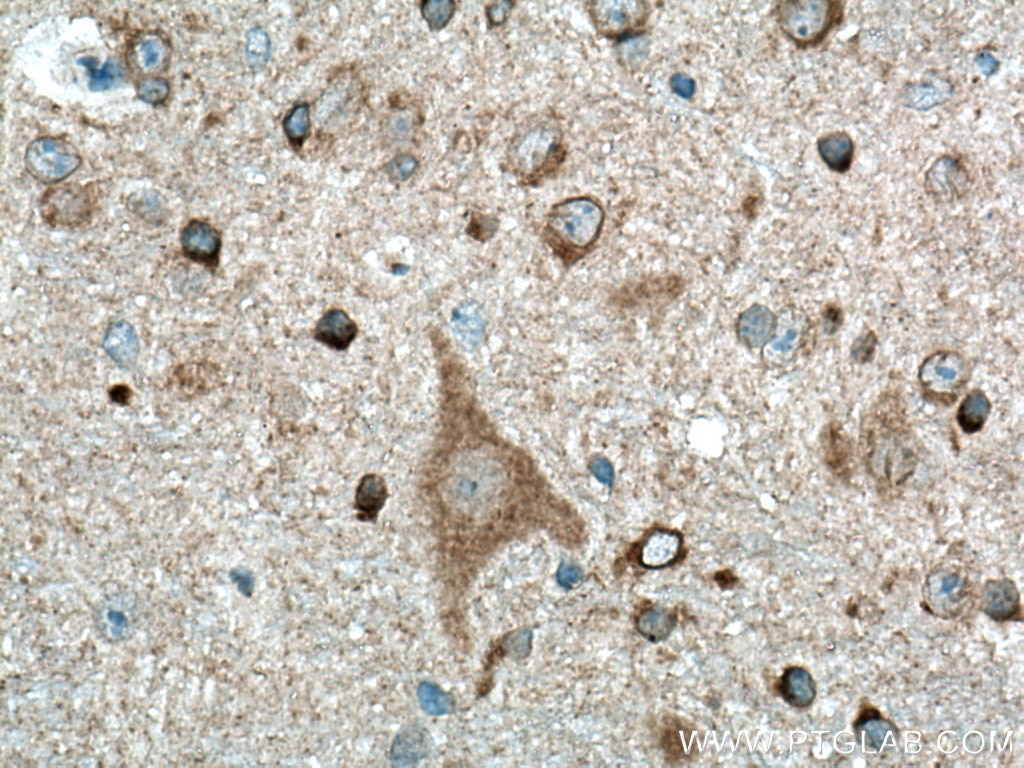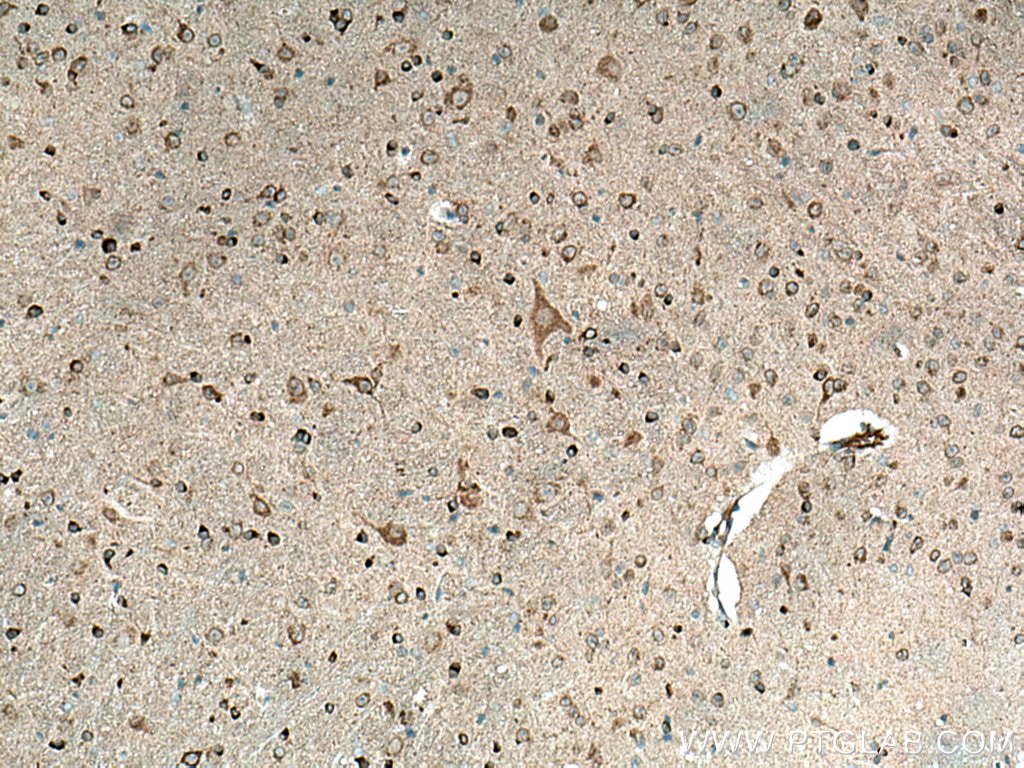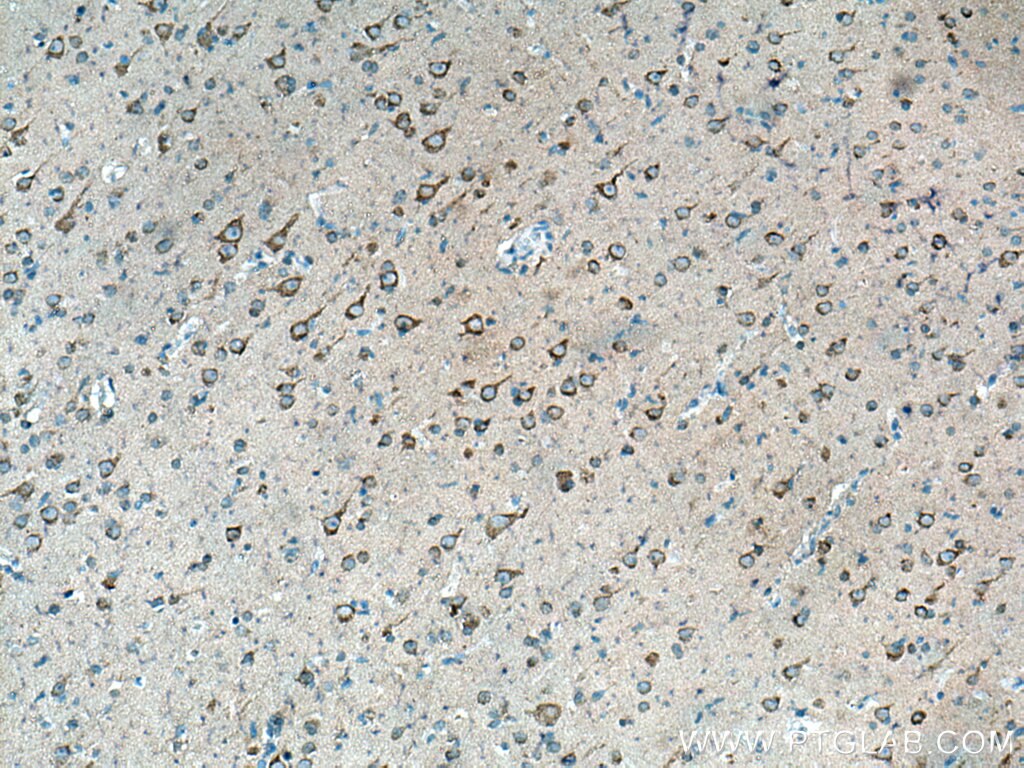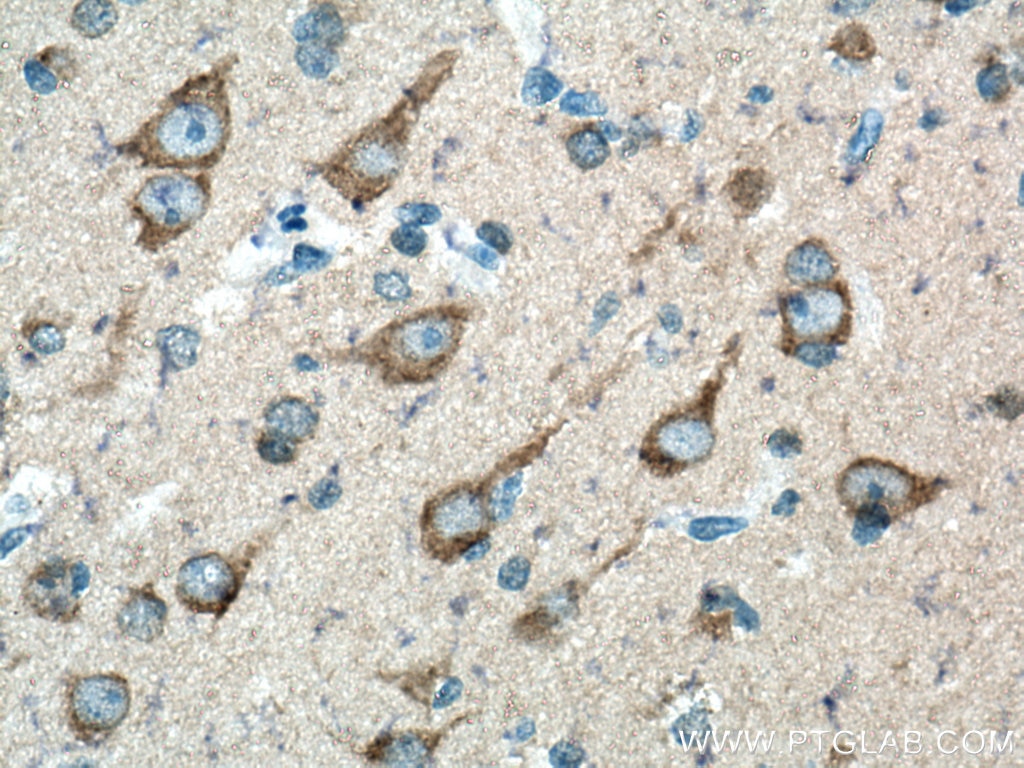Anticorps Polyclonal de lapin anti-APP
APP Polyclonal Antibody for IHC, WB, ELISA
Hôte / Isotype
Lapin / IgG
Réactivité testée
Humain, rat, souris
Applications
WB, IHC, ELISA
Conjugaison
Non conjugué
N° de cat : 27320-1-AP
Synonymes
Galerie de données de validation
Applications testées
| Résultats positifs en WB | tissu cérébral humain fœtal, cellules HEK-293T, cellules HeLa, cellules U-251, tissu cérébral de rat, tissu cérébral de souris |
| Résultats positifs en IHC | tissu cérébral de souris, tissu de gliome humain il est suggéré de démasquer l'antigène avec un tampon de TE buffer pH 9.0; (*) À défaut, 'le démasquage de l'antigène peut être 'effectué avec un tampon citrate pH 6,0. |
Dilution recommandée
| Application | Dilution |
|---|---|
| Western Blot (WB) | WB : 1:500-1:1000 |
| Immunohistochimie (IHC) | IHC : 1:50-1:500 |
| It is recommended that this reagent should be titrated in each testing system to obtain optimal results. | |
| Sample-dependent, check data in validation data gallery | |
Applications publiées
| WB | See 1 publications below |
Informations sur le produit
27320-1-AP cible APP dans les applications de WB, IHC, ELISA et montre une réactivité avec des échantillons Humain, rat, souris
| Réactivité | Humain, rat, souris |
| Réactivité citée | Humain |
| Hôte / Isotype | Lapin / IgG |
| Clonalité | Polyclonal |
| Type | Anticorps |
| Immunogène | APP Protéine recombinante Ag26299 |
| Nom complet | amyloid beta (A4) precursor protein |
| Masse moléculaire calculée | 87 kDa |
| Poids moléculaire observé | 100 kDa |
| Numéro d’acquisition GenBank | BC004369 |
| Symbole du gène | APP |
| Identification du gène (NCBI) | 351 |
| Conjugaison | Non conjugué |
| Forme | Liquide |
| Méthode de purification | Purification par affinité contre l'antigène |
| Tampon de stockage | PBS avec azoture de sodium à 0,02 % et glycérol à 50 % pH 7,3 |
| Conditions de stockage | Stocker à -20°C. Stable pendant un an après l'expédition. L'aliquotage n'est pas nécessaire pour le stockage à -20oC Les 20ul contiennent 0,1% de BSA. |
Informations générales
Aβ derives from APP via proteolytic cleavage by proteases called α-, β- and γ-secretase. The α-secretase cleavage precludes the formation of Aβ, while the β- and γ-cleavages generate APP components with amyloidogenic features. Amyloid beta A4 precursor protein(APP), encoded by APP gene which locate on human chromosome 21q, is a cell surface receptor and performs physiological functions on the surface of neurons relevant to neurite growth, neuronal adhesion and axonogenesis. APP expressed in all fetal tissues and is pronounced in brain, kidney, heart and spleen, but weak in liver. Defects in APP are the cause of Alzheimer disease type 1 (AD1). Amyloid β (Aβ) precursor protein (APP) is a 100-140 kDa transmembrane glycoprotein that exists as several isoforms. APP can be cleaved into several chains, this antibody could recognize N-terminal fragment of APP (N-APP).
Protocole
| Product Specific Protocols | |
|---|---|
| WB protocol for APP antibody 27320-1-AP | Download protocol |
| IHC protocol for APP antibody 27320-1-AP | Download protocol |
| Standard Protocols | |
|---|---|
| Click here to view our Standard Protocols |
Publications
| Species | Application | Title |
|---|---|---|
Alzheimers Res Ther Krüppel-like factor 5 accelerates the pathogenesis of Alzheimer's disease via BACE1-mediated APP processing. |
